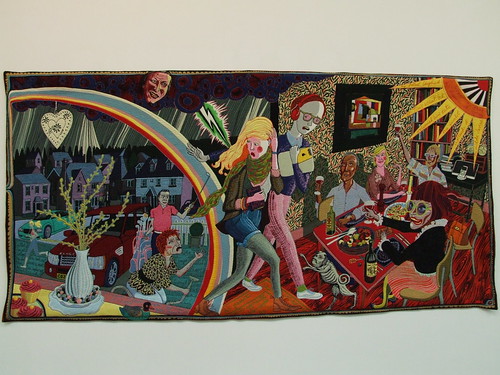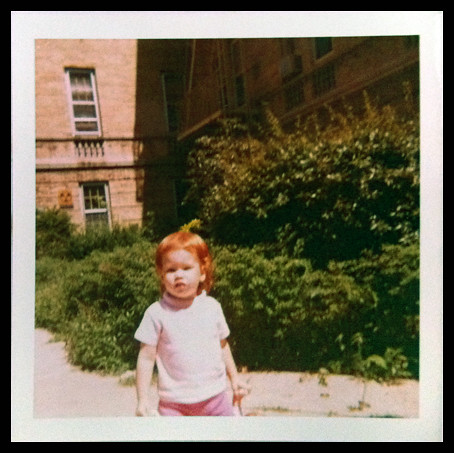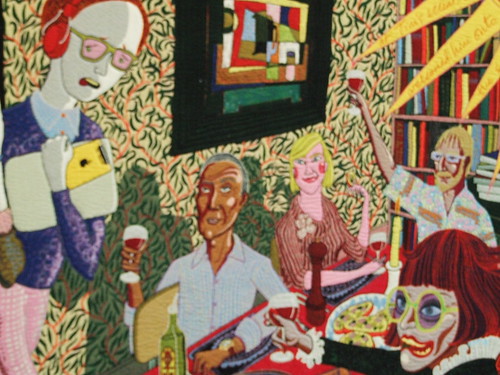Some cool all car games for girls images today:
Expulsion from Number 8 Eden Close

Image by failing_angel
Mixed material tapestry by Grayson Perry
Part of ‘The Vanity of Small Differences’ – a series of 6 tapestries (200x400cm)
In The Vanity of Small Differences Grayson Perry explores his fascination with taste and the visual story it tells of our interior lives in a series of six tapestries at Victoria Miro and three programmes, All in the Best Possible Taste with Grayson Perry, for Channel 4. The artist goes on a safari amongst the taste tribes of Britain, to gather inspiration for his artworks, literally weaving the characters he meets into a narrative partly inspired by Hogarth’s A Rake’s Progress.
Grayson Perry comments: "The tapestries tell the story of class mobility, for I think nothing has as strong an influence on our aesthetic taste as the social class in which we grow up. I am interested in the politics of consumerism and the history of popular design but for this project I focus on the emotional investment we make in the things we choose to live with, wear, eat, read or drive. Class and taste run deep in our character – we care. This emotional charge is what draws me to a subject".
Perry has always worked with traditional media; ceramics, cast iron, bronze, printmaking and tapestry. He is interested in how each historic category of object accrues over time intellectual and emotional baggage. Tapestry is the art form of grand houses: depicting classical myths, historical and religious scenes and epic battles. In this series of works Perry plays with idea of using this ancient allegorical art to elevate the commonplace dramas of modern British life.
The artist’s primary inspiration was A Rake’s Progress (1732 -33) by William Hogarth, which in eight paintings tells the story of Tom Rakewell, a young man who inherits a fortune from his miserly father, spends it all on fashionable pursuits and gambling, marries for money, gambles away a second fortune, goes to debtors’ prison and dies in a madhouse.
The Vanity of Small Differences tells the story of the rise and demise of Tim Rakewell and is composed of characters, incidents and objects Perry encountered on journeys through Sunderland, Tunbridge Wells and The Cotswolds. Hogarth has long been an influence on Perry’s works, his Englishness, his robust humour and his depiction of, in his own words, ‘modern moral subjects’. The secondary influence comes from Perry’s favourite form of art, early Renaissance painting.
Each of the six images, to a greater or lesser extent, pays homage to a religious work. Including Masaccio’s Expulsion from the Garden of Eden, Matthias Grünewald’s Isenheim Altarpiece, Rogier Van de Weyden’s Lamentation and three different paintings of The Annunciation by Carlo Crivelli, Grünewald and Robert Campin. The images also reference the pictorial display of wealth and status in The Arnolfini Portrait by Jan Van Eyck and Mr & Mrs Andrews by Thomas Gainsborough. Woven into each tapestry are snatches of text, each one in the voice of a participant in the scene illustrated. Each image also features a small dog, reminiscent of Hogarth’s beloved pug, Trump.
The Expulsion from Number Eight Eden Close, 2012
Tim is at university studying computer science, where he is going steady with a nice girl from Tunbridge Wells. Tim’s mother and stepfather now live on a private development and own a luxury car. She hoovers the Astroturf lawn, he returns from a game of golf.
There has been an argument and Tim and his girlfriend are leaving. They pass through a rainbow. Jamie Oliver, the god of social mobility, looks down. They are guilty of a sin just like Adam and Eve in Masaccio’s Expulsion from the Garden of Eden.
A dinner party is just starting. Tim’s girlfriend’s parents and fellow guests toast the new arrival.
[Initial text from Victoria Miro Gallery, description of each piece by Grayson Perry from C4 website]
Previously a furniture factory, the Victoria Miro Gallery lies just off City Road. The garden at the back also holds a reclaimed part of Regent’s Canal at Wenlock Basin.
concrete

Image by JKönig
"concrete"
it’s a sunny saturday morning
circa 1979
i’m sitting on the steps of my building
waiting for daddy to come get me
the daffodils are dead
but the hyacinths are screaming
and the grass needs mowing
i sit, waiting, for hours
sometimes
i stand up and stretch
looking down and checking
but i can still see my feet
no boobs yet to speak of
still just a girl
waiting
engine sounds
coming up the street
i jump up and look
leaning
but it’s not him
not his dirt-brown datsun z
doing 80 on the parkway
eight-year-old girl strapped in beside him
wine and white powder
giving the car its wings
the guardrail coming so close
she can touch it
no
it’s a light blue station wagon
filled with some other family
sitting back down on the concrete
crumbled dust sticking to my skin
i wait
watching the squirrels play their chasing game
swirling around the chestnut tree
Expulsion from Number 8 Eden Close

Image by failing_angel
Mixed material tapestry by Grayson Perry
Part of ‘The Vanity of Small Differences’ – a series of 6 tapestries (200x400cm)
In The Vanity of Small Differences Grayson Perry explores his fascination with taste and the visual story it tells of our interior lives in a series of six tapestries at Victoria Miro and three programmes, All in the Best Possible Taste with Grayson Perry, for Channel 4. The artist goes on a safari amongst the taste tribes of Britain, to gather inspiration for his artworks, literally weaving the characters he meets into a narrative partly inspired by Hogarth’s A Rake’s Progress.
Grayson Perry comments: "The tapestries tell the story of class mobility, for I think nothing has as strong an influence on our aesthetic taste as the social class in which we grow up. I am interested in the politics of consumerism and the history of popular design but for this project I focus on the emotional investment we make in the things we choose to live with, wear, eat, read or drive. Class and taste run deep in our character – we care. This emotional charge is what draws me to a subject".
Perry has always worked with traditional media; ceramics, cast iron, bronze, printmaking and tapestry. He is interested in how each historic category of object accrues over time intellectual and emotional baggage. Tapestry is the art form of grand houses: depicting classical myths, historical and religious scenes and epic battles. In this series of works Perry plays with idea of using this ancient allegorical art to elevate the commonplace dramas of modern British life.
The artist’s primary inspiration was A Rake’s Progress (1732 -33) by William Hogarth, which in eight paintings tells the story of Tom Rakewell, a young man who inherits a fortune from his miserly father, spends it all on fashionable pursuits and gambling, marries for money, gambles away a second fortune, goes to debtors’ prison and dies in a madhouse.
The Vanity of Small Differences tells the story of the rise and demise of Tim Rakewell and is composed of characters, incidents and objects Perry encountered on journeys through Sunderland, Tunbridge Wells and The Cotswolds. Hogarth has long been an influence on Perry’s works, his Englishness, his robust humour and his depiction of, in his own words, ‘modern moral subjects’. The secondary influence comes from Perry’s favourite form of art, early Renaissance painting.
Each of the six images, to a greater or lesser extent, pays homage to a religious work. Including Masaccio’s Expulsion from the Garden of Eden, Matthias Grünewald’s Isenheim Altarpiece, Rogier Van de Weyden’s Lamentation and three different paintings of The Annunciation by Carlo Crivelli, Grünewald and Robert Campin. The images also reference the pictorial display of wealth and status in The Arnolfini Portrait by Jan Van Eyck and Mr & Mrs Andrews by Thomas Gainsborough. Woven into each tapestry are snatches of text, each one in the voice of a participant in the scene illustrated. Each image also features a small dog, reminiscent of Hogarth’s beloved pug, Trump.
The Expulsion from Number Eight Eden Close, 2012
Tim is at university studying computer science, where he is going steady with a nice girl from Tunbridge Wells. Tim’s mother and stepfather now live on a private development and own a luxury car. She hoovers the Astroturf lawn, he returns from a game of golf.
There has been an argument and Tim and his girlfriend are leaving. They pass through a rainbow. Jamie Oliver, the god of social mobility, looks down. They are guilty of a sin just like Adam and Eve in Masaccio’s Expulsion from the Garden of Eden.
A dinner party is just starting. Tim’s girlfriend’s parents and fellow guests toast the new arrival.
[Initial text from Victoria Miro Gallery, description of each piece by Grayson Perry from C4 website]
Previously a furniture factory, the Victoria Miro Gallery lies just off City Road. The garden at the back also holds a reclaimed part of Regent’s Canal at Wenlock Basin.
Tags:Close, Eden, Expulsion, from, Number






0 comments:
Post a Comment